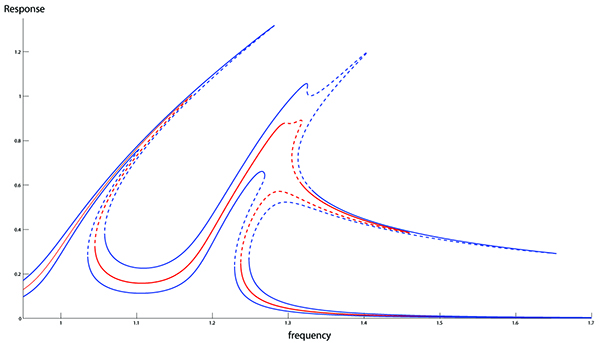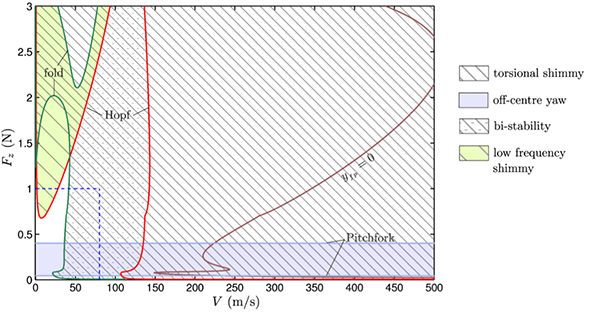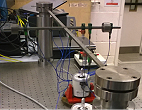Nonlinear dynamics

Engineering nonlinearity
In the relentless drive to build more cost-efficient, less resource-intensive structures, their operating envelopes are expanding resulting in larger deflections and geometric nonlinearities being observed. These developments have generated the need for analysis technique that can handle nonlinearity rigorously. The Group is developing dynamic design tools will not only allow structures to be designed to operate in their nonlinear region and so potentially transform their operating envelope, but will even allow the design of structures that actively exploit dynamic nonlinearity hence giving a major step change in their performance.
Please visit the project website Engineering Nonlinearity.
Numerical continuation for industry
Traditionally steady-state solutions to dynamic equations can be found using time-integration methods. However a powerful dynamical systems approach, numerical continuation, can also be used with the advantages that both stable and unstable solutions can be found and they can be tracked in the systems parameter space. These tools make it possible to generate ‘maps of solutions’ in an efficient way that provide valuable insight into the overall dynamic behaviour of a system and potentially to influence the design process.

While this approach has been employed in the military aircraft control community to understand the effectiveness of controllers for some years, the Group is using it for other industrial applications. These include studying the shimmy dynamics of aircraft landing gear, the deployment mechanics for landing gear and aeroelasticity in.
Human-structure interaction
Research in this area focuses on the dynamic behaviour of slender structures such as long-span bridges and cables, including wind- and human-induced vibrations. This includes dynamic interactions between:
- different structural components;
- fluid-structure interactions; and
- human-structure interactions.
A combination of analytical and numerical analysis with full-scale testing and laboratory experiments has the aim of increasing fundamental understanding of structural dynamics and practically applying it to real structures.
Project overview
The Group is developing and applying new analysis tools for understanding the complex dynamic behaviour exhibited by nonlinear structures. In addition to giving new insights into the mechanisms behind these complex behaviours, this work is allowing system identification methods to be developed allowing models to be refined and validated using experimental data.
Working in this area
